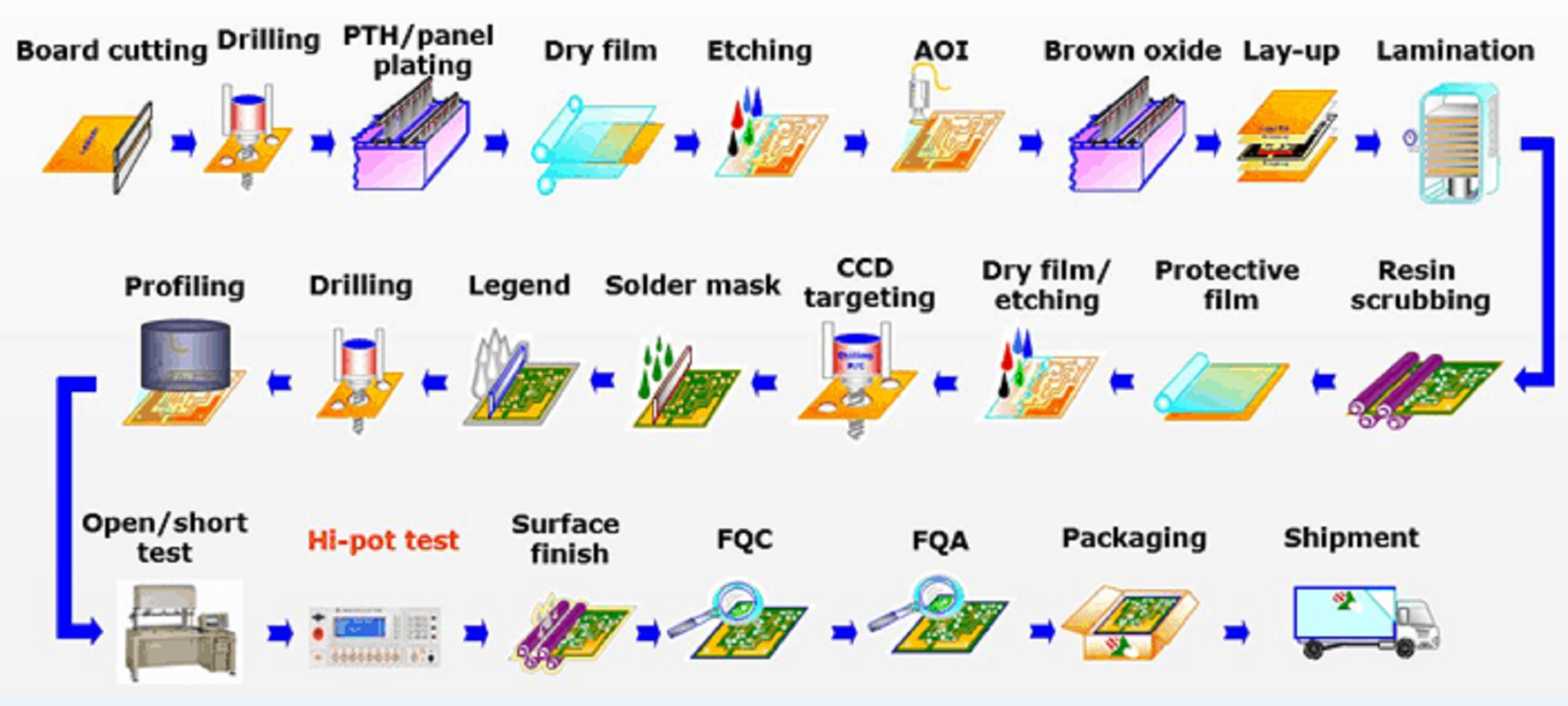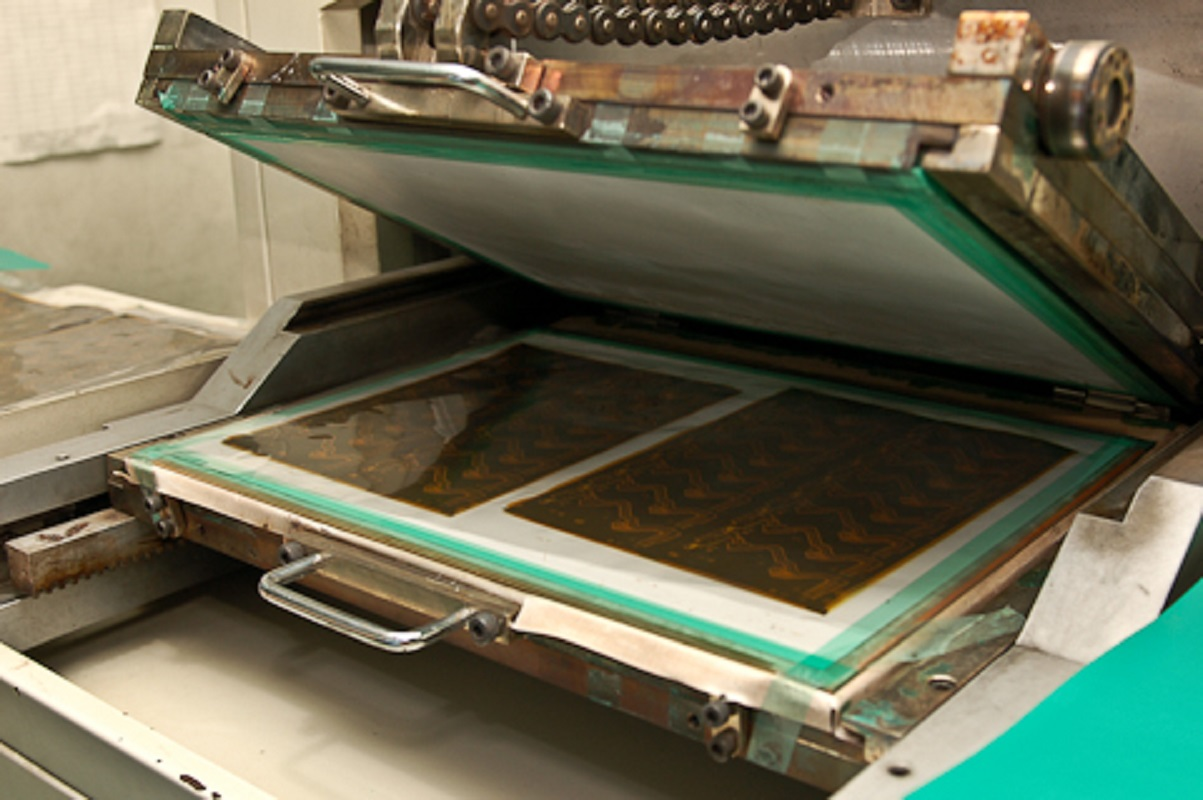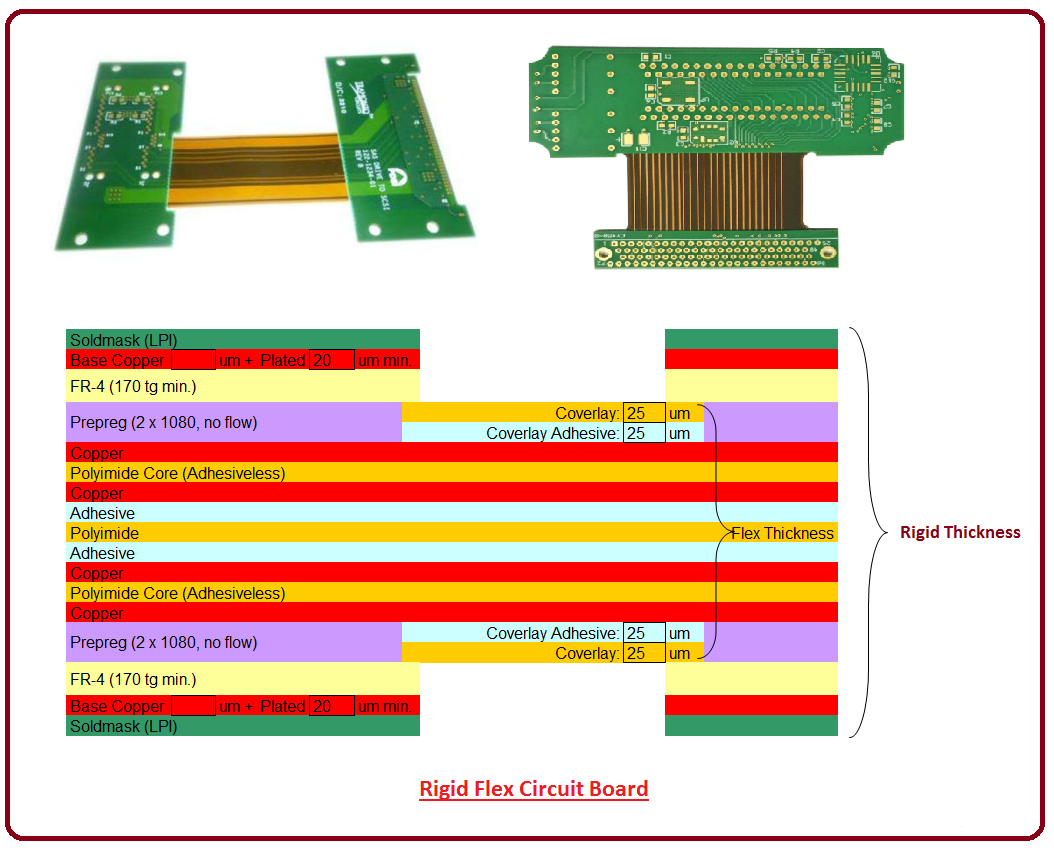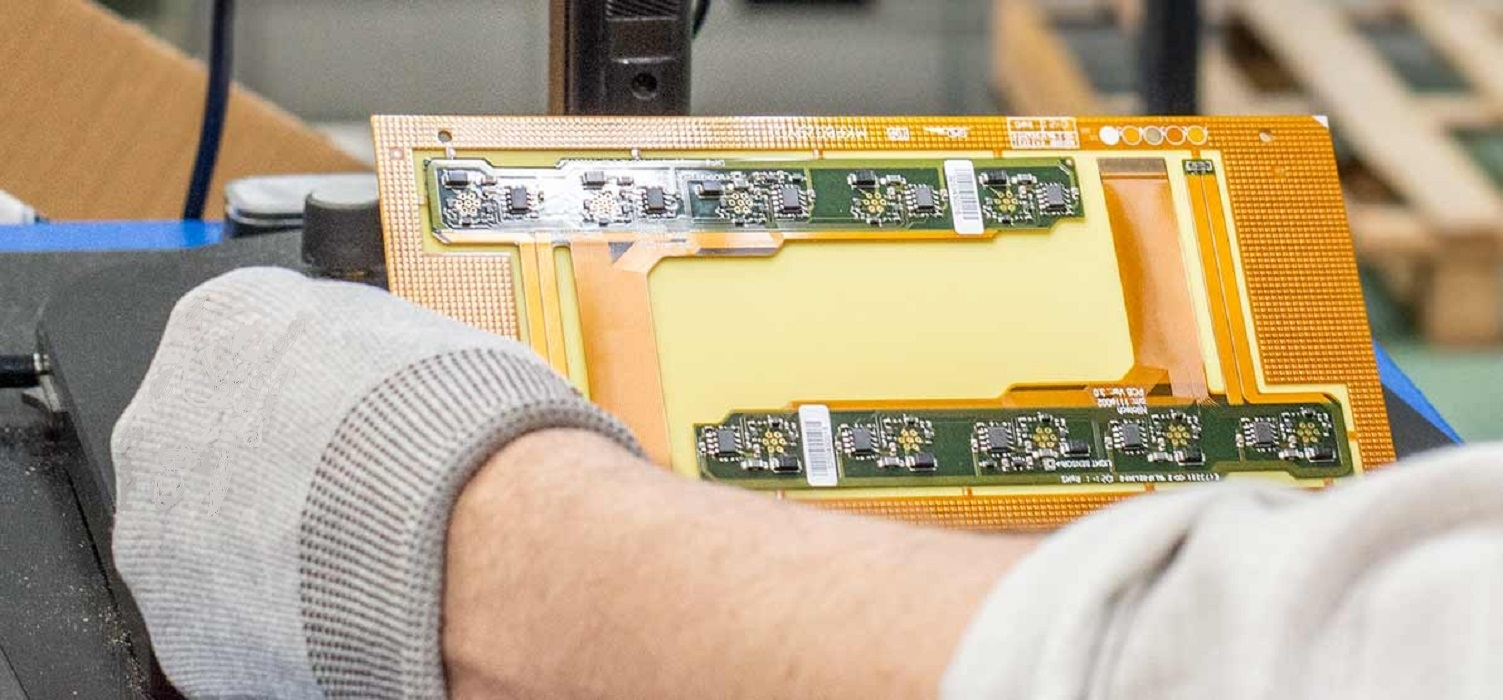Time:2021-04-03Views:
The birth and development of FPC gave birth to Rigid-Flex PCBs. Therefore, the Rigid-Flex PCBs is to provide a new hard board and rigidity for FPC. The circuit is combined according to the relevant process requirements through lamination and other processes to form a circuit board with FPC characteristics and PCB characteristics. After the FPC flexible board is completed, the production of the flexible and rigid board can be completed.

1. Punched hole
Drill holes on the FR4 and PP films, and the alignment holes are designed differently from general vias. Browning treatment is required after punching is completed.
2. Riveting
The CCL, PP glue, and FPC circuit boards are stacked and placed in a neat position. The original old process is to stack production and lamination step by step, but it is a waste of time. After many attempts, it was found that one stacking process could be completed.
3. Laminated
This is a relatively complete step in the production of flex-rigid boards. Most of the materials are integrated for the first time. First, the bottom layer of CCL and PP film, the FPC soft board made in the previous process, is placed on top of the FPC soft board. PP film, and then place the last layer of CCL. All materials to be laminated are placed in order and pressed together.

4. CNC Routing
It is to remove the excess part of the edge of the circuit board that is not covered by lines. Afterwards, it is necessary to measure whether the material has excessive expansion and contraction. Since the PI used also has expansion and contraction, this has a great impact on the production of circuit boards.
5. Drilling
This step is the first step to turn on the entire circuit board, and the production parameters should be produced according to the design parameters.

6. Glue removal, plasma treatment
First, remove the glue residue produced by drilling the circuit board, and then use plasma cleaning to clean the vias and the board surface.
7.Immersion copper
This step is the process of plated through holes, also known as hole metallization. Through-hole power conduction is achieved.
8.Plate plating
Conduct local electroplating of copper on the top and surface of the electroplated hole, so that the copper thickness above the through hole exceeds a certain height of the CCL surface.
9.Outer dry film production
The same as the production process of the dry resist film of the flexible PCB. Produced the circuit to be etched on the CCL. After the developing is completed, do the wiring inspection.
10.Partten Plating
11.After the initial Immersion copper
Pattern plating is performed, and the current time and copper plating wire are used according to the design requirements to reach a certain plating area.
12.Alkaline etching
13.solder mask
This step has the same effect as the flexible protective film. We see that the Rigid PCB is generally green. After the printing is completed, check it.
14.butt plate
Laser cutting is performed in the area where the soft board is located, but the area where the Rigid board is not needed, so that the soft board is exposed.
15.Curing is a process of baking
16.Surface treatment
Generally, at this time, a flexible and rigid board has been produced, and it only needs to be metallized on the surface of the circuit board, which can play a role in preventing wear and oxidation. Generally, this process is to soak the circuit board in a chemical solution, so that the metal elements in the solution are densely distributed on the circuit board.
17.doing silkscreen
The position of the assembled parts and the basic product information are printed on the rigid-flex board in the form of characters.
18. Test
This is an inspection process of whether the circuit board is qualified. The test items are electrically tested according to customer requirements. The tests generally include impedance test, open-short circuit test and so on.
19.Final inspection

20. Packaging and shipping
There are many ways to package circuit boards. Generally, most manufacturers use encapsulation bags to package them, separate them with interlayer boards, and then use a vacuum packaging machine to vacuum-pack the flexible and rigid boards.

